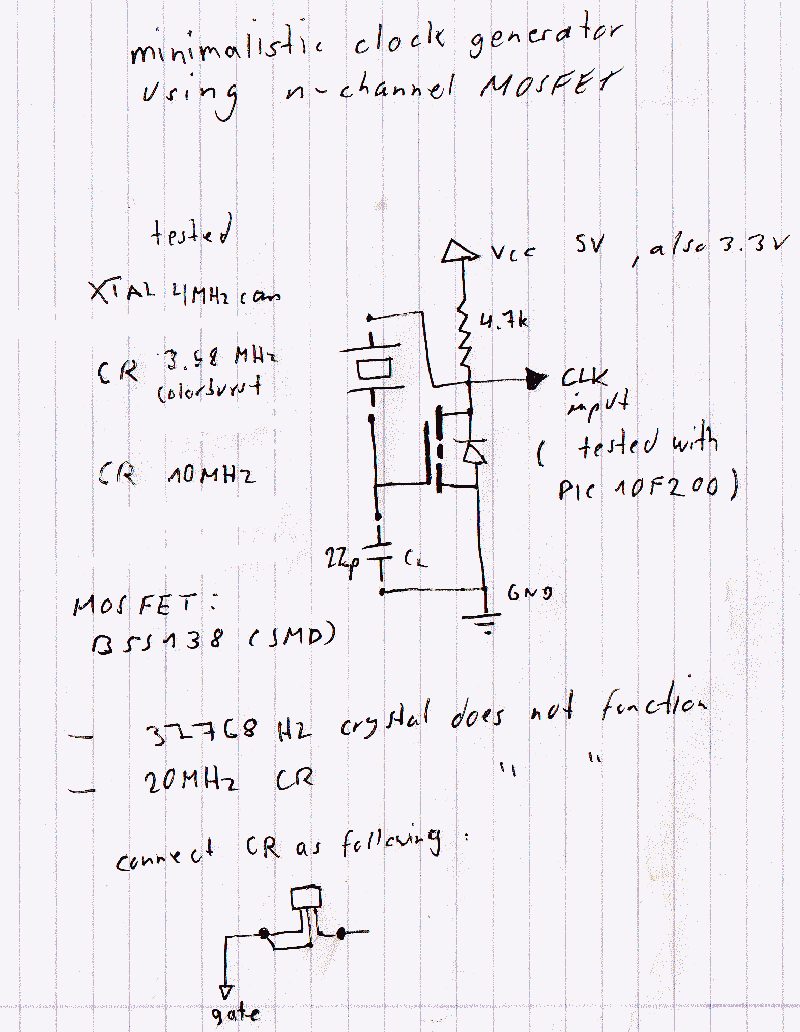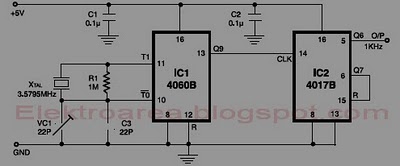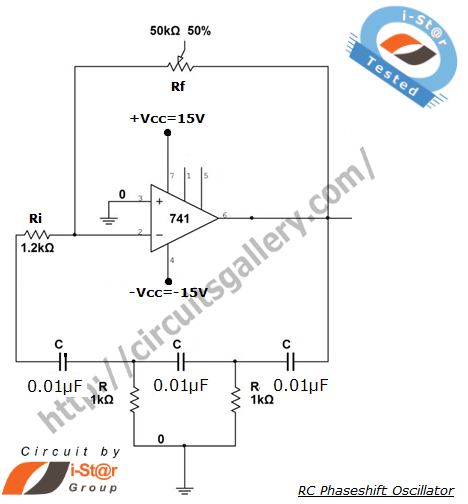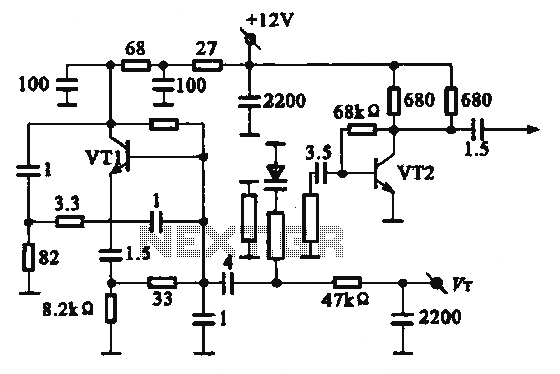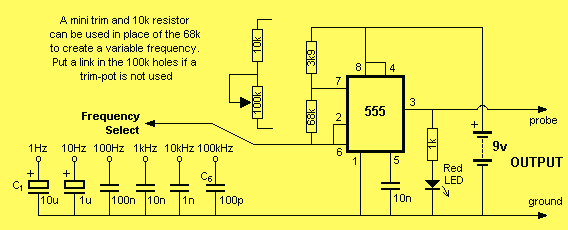
Crystal oscillator
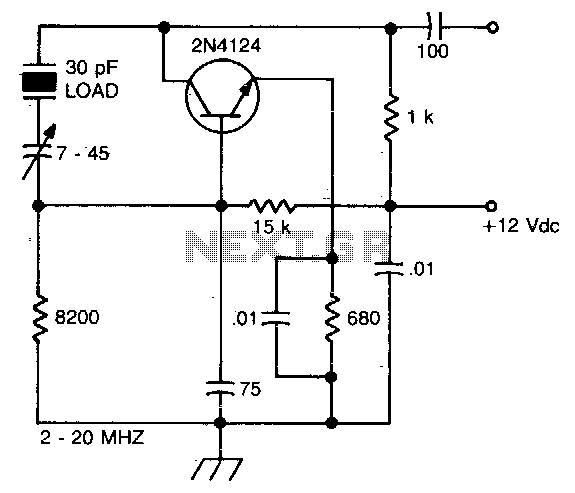
The crystal is part of a feedback circuit connecting the collector to the base. A trimmer capacitor in series adjusts the point on the reactance curve where the crystal operates, allowing for frequency trimming. The capacitor exhibits negative reactance, enabling the crystal to operate within the positive reactance region.
The described circuit utilizes a crystal oscillator configuration, where the crystal serves as the frequency-determining element. In this feedback loop, the collector output is fed back to the base of the transistor, creating a regenerative effect that enhances oscillation stability and amplitude. The trimmer capacitor, placed in series with the crystal, is crucial for fine-tuning the oscillation frequency. By adjusting this capacitor, the reactance characteristics of the circuit can be modified, allowing the crystal to operate at the desired frequency.
The negative reactance of the capacitor counteracts the inherent positive reactance of the crystal, effectively shifting its operational point on the reactance curve. This adjustment is vital for achieving precise frequency control, which is essential in applications such as RF transmission, signal generation, and timing circuits. The overall design ensures that the oscillator maintains a stable output frequency, with the trimmer capacitor providing the necessary flexibility for fine adjustments.
In summary, this circuit design exemplifies the integration of passive components to enhance the performance of a crystal oscillator, demonstrating the importance of reactance in achieving desired operational characteristics.The crystal is in a feedback circuit from collector to base. A trimmer capacitor in series shifts the point on the reactance curve where the crystal operates, thus providing a frequency trim The capacitor has a negative reactance so the crystal is shifted to operate in the positive reactance region. 🔗 External reference
The described circuit utilizes a crystal oscillator configuration, where the crystal serves as the frequency-determining element. In this feedback loop, the collector output is fed back to the base of the transistor, creating a regenerative effect that enhances oscillation stability and amplitude. The trimmer capacitor, placed in series with the crystal, is crucial for fine-tuning the oscillation frequency. By adjusting this capacitor, the reactance characteristics of the circuit can be modified, allowing the crystal to operate at the desired frequency.
The negative reactance of the capacitor counteracts the inherent positive reactance of the crystal, effectively shifting its operational point on the reactance curve. This adjustment is vital for achieving precise frequency control, which is essential in applications such as RF transmission, signal generation, and timing circuits. The overall design ensures that the oscillator maintains a stable output frequency, with the trimmer capacitor providing the necessary flexibility for fine adjustments.
In summary, this circuit design exemplifies the integration of passive components to enhance the performance of a crystal oscillator, demonstrating the importance of reactance in achieving desired operational characteristics.The crystal is in a feedback circuit from collector to base. A trimmer capacitor in series shifts the point on the reactance curve where the crystal operates, thus providing a frequency trim The capacitor has a negative reactance so the crystal is shifted to operate in the positive reactance region. 🔗 External reference
